How Long Do Projectors and Bulbs Really Last? Understanding Their Lifespan

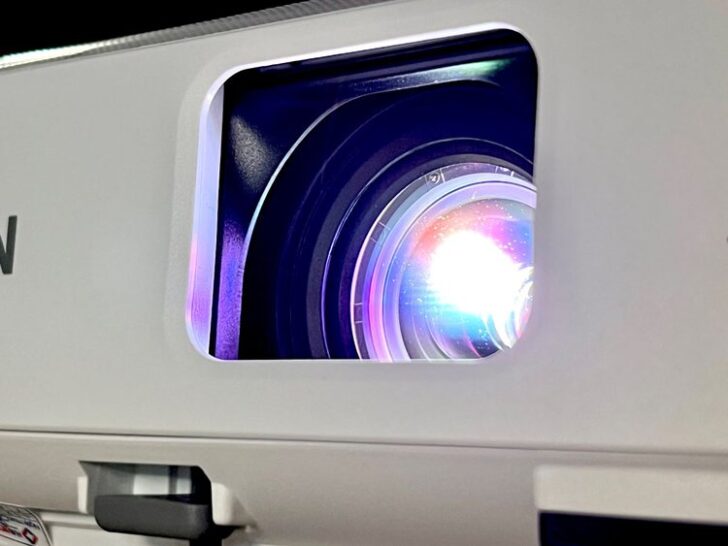
What To Know
- Projector lifespan varies by type, with lamp projectors (LCD & DLP) lasting 5,000-10,000 hours and lamp-free models like LED and laser projectors lasting up to 20,000-60,000 hours.
- Lamp projector bulbs need replacement after 1,500-2,000 hours (normal mode) or 3,000-5,000 hours (ECO mode), with brightness degradation indicating half-life.
- To extend a projector’s life, use ECO mode, ensure proper ventilation, and regular maintenance, such as using a fan and cleaning filters.
Unveiling the life expectancy of your projector and its bulbs can be as critical as the images they cast.
Our article illuminates this topic, providing robust insights into projector longevity and bulb life.
Quick Navigation
Different Types of Projectors & Their Lifespan (Also Their Bulbs’)
Because light sources influence a projector’s lifespan, projectors of various types have varying lifespans. We’ll explore each of them in this section.
Projectors are grouped into two based on their light source: lamp and lamp-free projectors.
Lamp projectors are older technology but are still widely used because of their affordability. They include DLP and LCD projectors with replaceable, traditional lamps.
On the other hand, lamp-free projectors use modern, solid-state light sources, which sets them apart from regular DLP and LCD projectors. Lamp-free projectors include LED and Laser projectors.
| Projector | Bulb’s Expectancy (hours) | Projector’s Lifetime (hours) |
| LCD |
|
From 5,000 to 10,000 |
| DLP | ||
| LED | From 30,000 to 60,000 | |
| Laser | Up to 20,000 | |
Lamp Projectors
Lamp projectors use metal halide or UHP mercury vapor lamps (bulbs), which burn out quickly and must be replaced multiple times over the projector’s lifetime.
These projector lamps last about 1,500 to 2,000 hours when used in normal mode but can last 3,000 to 5000 hours in ECO or power-saving mode. However, the ECO mode can cause the projector lamp to flicker—you can avoid this by launching new lamps in standard mode first (for up to 50 hours) before turning on ECO mode.
One characteristic of lamps is that their brightness wanes throughout their lifetime. We advise that you replace your projector lamp at its half-life (when its original brightness has dropped halfway).
Depending on manufacturing quality, the average lamp projector has a life expectancy of 5,000 to 10,000 hours (5 and a half years at max if you use it for 5 hours daily). You only need to replace the lamp about two to five times during its lifetime.
Lamp projectors are grouped into DLP and LCD projectors based on their projection technologies. Below is some insight into how they work and what impacts their life expectancy.
LCD Projectors
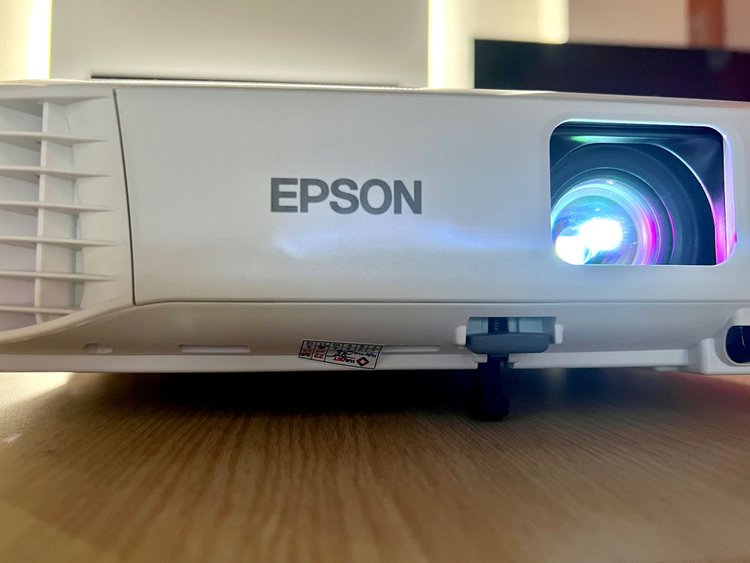
LCD (Liquid Crystal Display) is an older, transmissive display technology used in TVs, monitors, and projectors.
LCD projectors use a combination of color filters and dichroic mirrors to separate the lamplight into RGB (red, green, and blue) colors. Next, the colored lights pass through LCD panels and a dichroic prism, recombining into accurate colors for each image pixel.
Because it is older technology, LCD projectors are usually bulkier and less expensive than their DLP counterparts. These projectors are typically installed in a fixed position, and with proper maintenance, they tend to reach their proposed life expectancy.
DLP Projectors
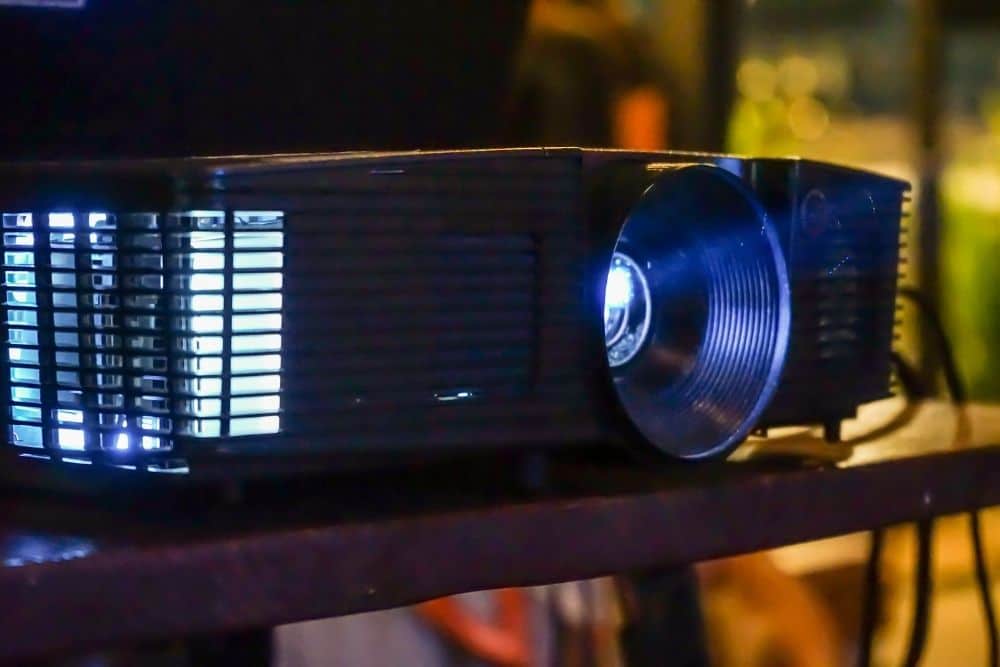
DLP (Digital Light Processing) is a reflective display technology that came into the AV scene in 1987. DLP projectors use a spinning color wheel and a DMD chip consisting of over two million tiny mirrors to create images.
The light from the lamp passes through the color wheel, which separates it into RGB colors. Next, the mirrors on the chip reflect or deflect the rays, recombining them and passing the full image through the projector’s lens.
DLP is digital technology; hence, it has fewer parts and is more portable. On the other hand, DLP projectors have several moving parts (i.e., the spinning wheel), which have a higher chance of damage and can affect the projector’s lifespan.
Lamp-Free Projectors
Lamp-free projectors use solid-state light sources like LEDs and lasers. Solid-state light sources are known for their incredible longevity; they use semiconductors to convert electricity into light.
One distinctive feature of lamp-free projectors is that their light sources are not replaceable. Hence, each projector’s life expectancy directly hinges on the longevity of its LEDs or laser.
Don’t worry! Even without lamp changes, lamp-free projectors have longer lifespans than lamp projectors. Their life expectancy ranges from 20,000 to 30,000 hours.
Lamp-free projectors still use DLP and LCD technologies, but they are modified to work with solid-state light sources instead of traditional projector lamps. As a result, lamp-free projectors are classified based on their specific light sources (and not their projection technology).
Let’s examine the life expectancy of each!
Laser Projectors
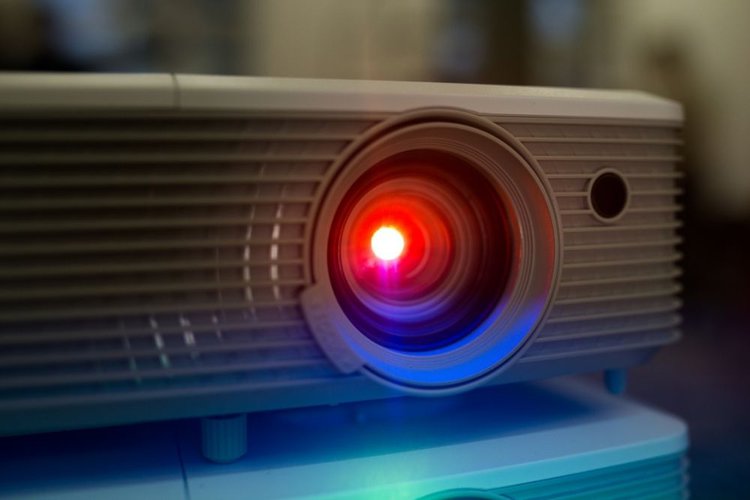
Laser projectors use a single blue laser or a set of RGB lasers as their light source. The projectors use a phosphor wheel and color filters to separate the laser light beam(s) into millions of other colors, which lends them high color accuracy.
Most laser projectors have a life expectancy of 20,000 hours, and their lasers can last just as long. With proper maintenance, laser projectors can reach and exceed their manufacturers’ proposed life expectancy, maintaining their brightness consistently for most of their lifetime.
LED Projectors
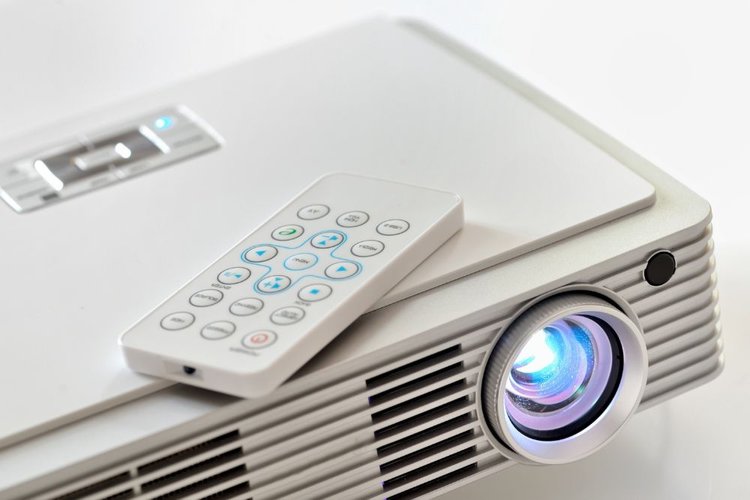
With up to 60,000 hours of lamp life, LEDs (light-emitting diodes) are the most long-lasting light sources. The bulbs light up as long as an electric current passes through the diode.
Their only downside is that they are dimmer than lasers or metal halide lamps. Also, the half-life rule applies strictly to LED projectors because their brightness and color depreciate noticeably over time.
Most LED projectors have a life expectancy of 30,000 hours—they can last longer, but projection quality would drop significantly. LEDs consume little energy, so the projector remains cool, and there’s less chance of heat damage to other components.
How to Determine If Your Projector Bulb Is Nearing the End of Its Lifespan
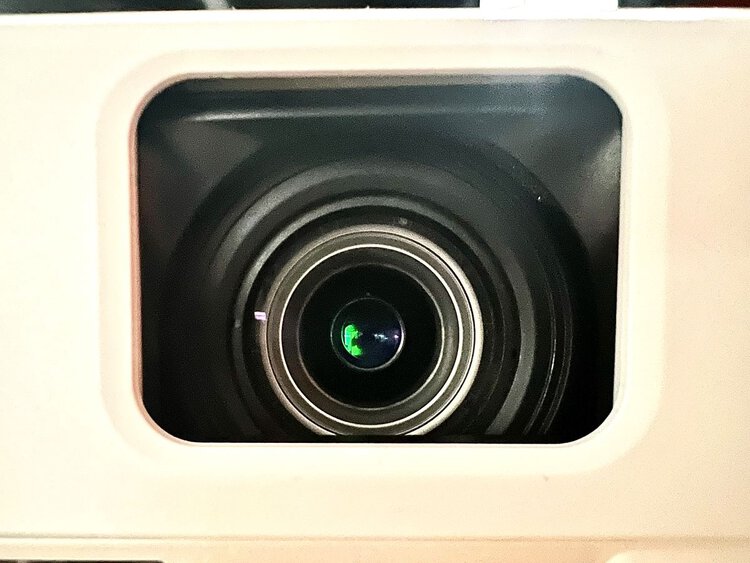
You don’t have to wait till a projector bulb burns out before you replace it. It’s time for a replacement once the lamp has reached its half-life.
If you suspect your projector bulb is nearing the end of its lifespan, this section will guide you through the various ways you can confirm your suspicions.
1. Check Lamp Hours
Lamp hours refers to your projector bulb’s operating time (lifespan). It’s measured in hours and represents how long the bulb has to last before it loses 50% brightness.
There are two ways to check projector lamp hours:
Older Projector Models
This particular method applies to older projector models. You can use the Power function to check how many hours of usage the current lamp has recorded.
Press and hold your projector’s Power button for 30 seconds until an overlay screen appears. This screen flashes fast, so be ready to note down the lamp hours you see.
Modern Projectors
- Plug the projector into an outlet and Power it on.
- Allow your projector and its bulb to warm up.
- Find the Menu option on the Home screen and navigate through these options: Menu > Setup > Options > Lamp Life.
- Here, you’ll find a summary of how long your lamp has been used and how many hours it has left. These values reset whenever you replace your projector lamps.
NOTE: The steps may vary slightly between models and manufacturers. Instead of “Options,” some projectors may use “Properties,” “Details,” or “Settings.” Please check your user manual for a more detailed guide.
2. Check the Projection Image
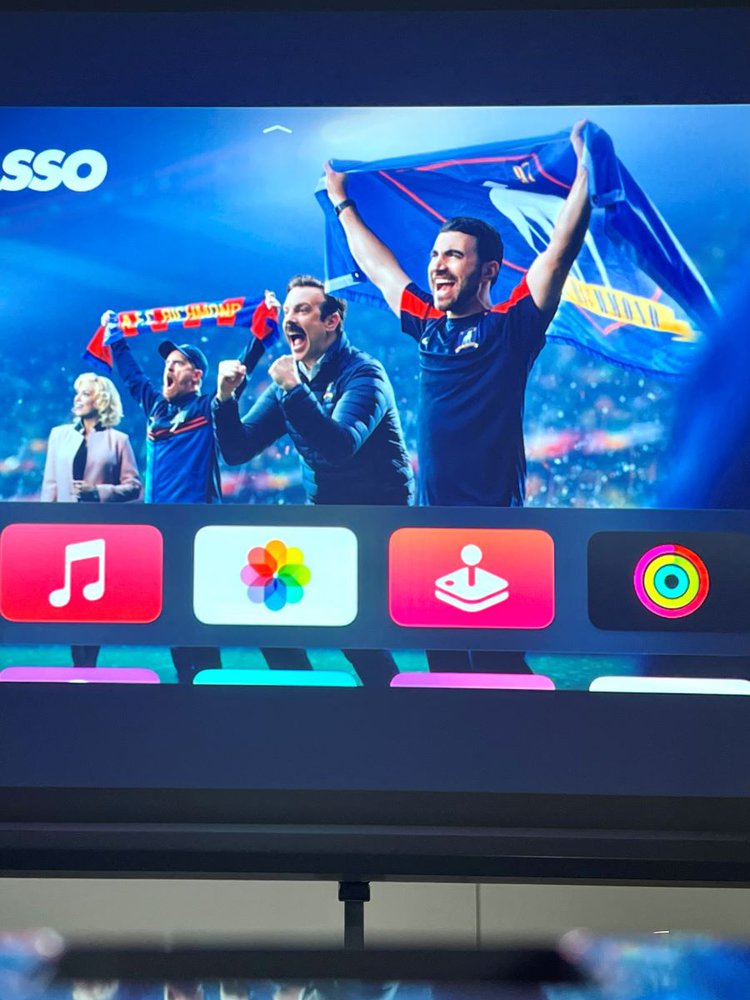
Before a projector lamp dies completely, it shows signs of “sickness” during projection. You can’t do a visual inspection of your projector lamp without unraveling the projector, but you can pay attention to its performance to detect signs of damage.
Below are signs to look out for:
Projection Brightness
If your projected image is now half as bright as it originally was, it’s time to switch to a new lamp. Also, pay attention to the color of the light bouncing off the screen. If it’s yellow instead of white, your projector’s bulb is nearing the end of its lifespan.
Projection Quality
As your projector bulb deteriorates, you’ll notice a drop in the quality of images it projects. If you notice poor color accuracy and grainy pixelation, the lamplight is not bright enough.
Projection Flickering
When projected images flash on and off (in sections or even the entire image), it’s a sign that the projector lamp is about to burn out. If you keep using it, you’ll hear an audible ‘pop’ the moment the bulb burns.
3. Checking Indicator Lights
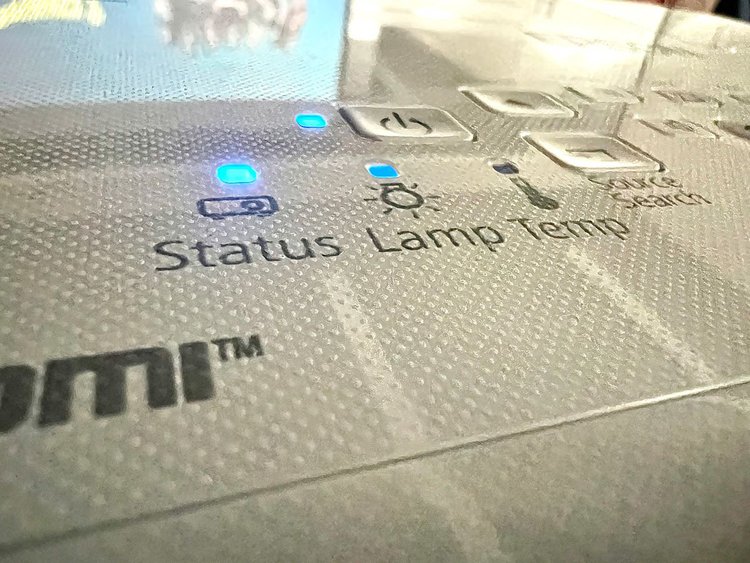
Projector indicator lights can also warn you of impending or current damage to the lamp. Be on the lookout for the following indicator light combinations:
| Faulty Lamp | Damaged Lamp | |
| Power | Off | Flashing blue |
| Status | Flashing blue | Light status varies |
| Lamp | Orange | Flashing orange |
| Temp | Off | Light status varies |
With faulty lamps, check to see if you installed the current lamp incorrectly or whether it has suffered some damage. Reinstall or replace the lamp as you see fit.
On the other hand, if your indicator lights point to a damaged lamp, turn off the projector to prevent further damage to other components. Replace the broken lamp.
NOTE: Indicator lights may mean different things for different projector brands and models. The combination above applies to Epson projectors and serves as an across-the-board guide for others. Consult your manufacturer’s manual for device-specific guides.
How to Extend Your Projector’s Lifespan
- Use a padded carrying case during transport.
- Mount the projector in a well-ventilated space.
- Place a small fan close by to provide cool air.
- Blow compressed air through the projector to remove dust.
- Replace or clean the projector filter regularly.
- Don’t turn projectors ON and OFF rapidly—give a minute or two in between.
- Use your projector on ECO mode to save power and lamp life.
5 Factors That Determine a Projector’s Life Expectancy
Several factors contribute to a projector’s lifespan. Contrary to popular opinion, it does not hinge solely on the bulb; lamp projectors make this very obvious.
You can have two projectors of the same type with the same life expectancy, and they would pack up at different times because both are used and maintained in different conditions.
For example, the LCD projector of a user in this forum only lasted about 5,000 hours (roughly 4 years, he said), while another user had used his projector for 5 years and hadn’t had any problem with it back then.
Below are factors that can influence your projector’s life expectancy.
- Frequency of use: A projector you use very often will have a shorter lifespan than one used sparingly. Components can overheat and spoil if your projector doesn’t get to rest.
- Air circulation: The projector needs enough air to cool after use. If the air is dusty, dirt will gather in the projector’s filters, blocking airflow and causing overheating.
- Temperature: Heat damages projectors and other electronics. Lamp projectors tend to run hot, and it gets worse if the projector is placed in a hot/poorly ventilated environment.
- Operation: The way you handle the projector contributes to its longevity. From mounting and usage to transporting and storage, every process counts.
- Quality/Lifespan of components: Every projector component (i.e., capacitors, cooling fans, DMD chips) has its lifespan, which contributes towards the life expectancy of the whole projector. High-quality components mean a longer lifespan.
Conclusion
Several factors influence a projector’s life expectancy, including maintenance, manufacturing quality, and the lifespan of individual components. However, the projector bulb (light source) sits at the center of things because there is no projection without light.
Lamp projectors last around 5,000 to 10,000 hours; their lamps have short lifespans, but you can replace them multiple times over the projector’s lifetime.
The life expectancy of lamp-free projectors hinges on the longevity of their light sources. However, because lasers and LEDs are long-lasting light sources, lamp-free projectors outlast lamp projectors by several times.
What kind of projector do you own, and how long have you had it for? Let us know!
Gabriella ‘Diogo is a technical writer with a vested interest in tech hardware and equipment. She shares her knowledge and processes in an easy-to-grasp, lighthearted style. When she’s not testing or researching device performance, you’ll find her writing short stories or rewatching episodes of her favorite sitcoms.


